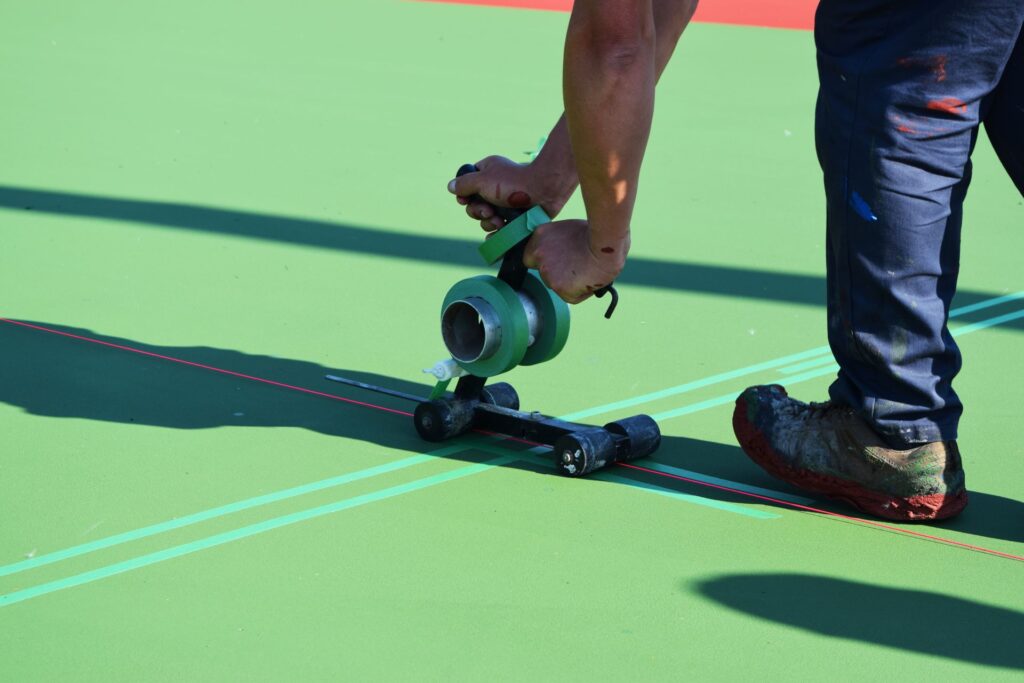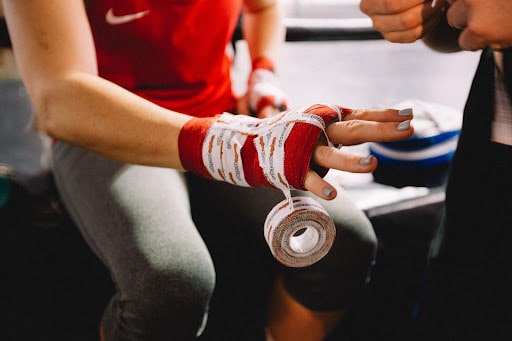Tennis is a sport that requires precision, skill, and a well-maintained court to play on. Whether you’re a homeowner with a private tennis court or managing a public facility, proper tennis court maintenance is crucial to ensure a safe and enjoyable playing experience.
This comprehensive guide teaches you the vital steps required to keep your tennis court in top shape. Moreover, you’ll explore a critical aspect of tennis court maintenance that often carries substantial financial implications: resurfacing.
Resurfacing is a significant investment in your court’s longevity and performance. It’s a process that involves more than just aesthetic enhancements, and understanding the tennis court resurfacing cost is crucial. As you explore each facet of tennis court care, you’ll gain insights into maintaining your court’s safety, playability, and overall appeal. Read on to learn more!
1. Regular Cleaning

The foundation of tennis court maintenance is regular cleaning. Debris, leaves, and dirt can accumulate on the court, affecting playability and safety. Use a broom or leaf blower to remove loose debris and sweep the entire court surface to eliminate finer particles.
Pay extra attention to the corners and edges, where debris tends to gather. Cleaning should be done at least once a week but more frequently during the fall season when leaves fall.
2. Pressure Washing
To maintain the court’s surface integrity, pressure washing is essential. This process helps remove stubborn stains, algae, and moss growth. Use a pressure washer with a suitable nozzle to prevent damage to the court surface.
Be cautious not to overdo it, as excessive pressure can lead to cracks or surface wear. Aim to pressure wash your court at least once every six months to keep it looking its best.
3. Filling Cracks
Cracks in the court surface can be a major hindrance to gameplay and safety. Regularly inspect your tennis court for cracks; when you find them, take immediate action. Small cracks can be filled with a specialized crack filler, while larger cracks may require professional attention. Ignoring cracks can lead to more extensive damage, increasing the eventual tennis court resurfacing cost.
4. Resurfacing
Tennis court resurfacing is a more substantial maintenance task that should be performed every four to eight years, depending on the court’s usage and climate conditions. The resurfacing process involves removing the old surface, repairing any structural issues, and applying a new acrylic coating. This enhances the court’s appearance and ensures optimal playing conditions. The tennis court resurfacing cost can vary significantly based on factors like court size, location, and chosen materials. You must obtain multiple quotes and factor this into your long-term maintenance budget.
5. Net And Fence Maintenance
Maintaining the tennis net and the surrounding fence is crucial for both safety and the overall aesthetic appeal of your tennis court. Regularly inspect the tennis net’s tension. The net should be taut and appropriate, typically around three feet at the center. If you notice sagging or unevenness, promptly tighten it to ensure fair gameplay.
Moreover, watch for any signs of damage to the net, such as fraying or holes. Damaged nets can pose safety hazards and affect the quality of play. Repair or replace damaged nets promptly to maintain the integrity of your court.
Lastly, examine the court’s surrounding fence regularly. Look for rust or corrosion, especially in areas prone to moisture exposure. Additionally, check for loose posts or sections that may compromise the fence’s stability. Repair or replace any damaged components to ensure safety and preserve the court’s appearance.
6. Line Repainting

Properly marked lines are essential for the accurate and fair play of tennis matches. Tennis court lines should be clearly visible and meet regulation standards. To achieve this, regularly repaint or touch up the lines using high-quality paint specifically designed for tennis courts. This practice will help maintain accuracy and durability, ensuring that matches are played precisely.
7. Drainage Maintenance
Adequate drainage is vital to prevent water accumulation on the tennis court’s surface, which can lead to damage and unsafe playing conditions. Ensure that the court’s drainage system is functioning correctly. To do so, examine drains, gutters, and other components designed to channel water away from the court. Any blockages or damage should be addressed promptly to prevent water buildup.
It’s best to regularly remove debris, leaves, and dirt from the court’s surface and drainage system. Debris can clog drains, leading to water damage and even mold growth. A clean drainage system will help protect the integrity of your court.
8. Annual Professional Inspection
Scheduling an annual professional inspection is a proactive approach to tennis court maintenance that can save you from costly repairs in the long run. A professional inspection can identify potential issues early on, preventing them from escalating into more significant problems. This can include detecting cracks, drainage issues, or structural problems that may not be immediately apparent.
Moreover, experts can provide tailored guidance based on your tennis court’s specific needs, usage, and local conditions. They can recommend maintenance strategies and improvements to enhance safety, playability, and longevity.
Wrap Up
Maintaining a tennis court involves regular cleaning, minor repairs, and occasional resurfacing. It’s important to consider the cost of tennis court resurfacing, which represents a significant investment in the long-term functionality and appearance of your court. By consistently following these essential maintenance steps, you ensure that your tennis court remains in excellent condition, providing a safe and enjoyable playing experience for many years. This underscores the role of tennis in enhancing one’s well-being through physical activity and recreation.
Come check out Belly Up Sports on Twitter/X for more sports and entertainment news and content. Featured Image by South_agency via Getty Images.






